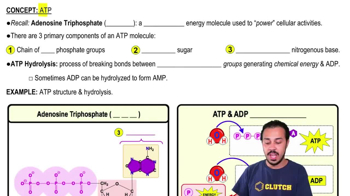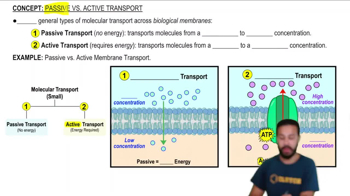Multiple Choice
Much of the suitability of ATP as an energy intermediary is related to the instability of the bonds between the phosphate groups. These bonds are unstable because __________.
1882
views
1
rank
 Verified step by step guidance
Verified step by step guidance Verified video answer for a similar problem:
Verified video answer for a similar problem:

